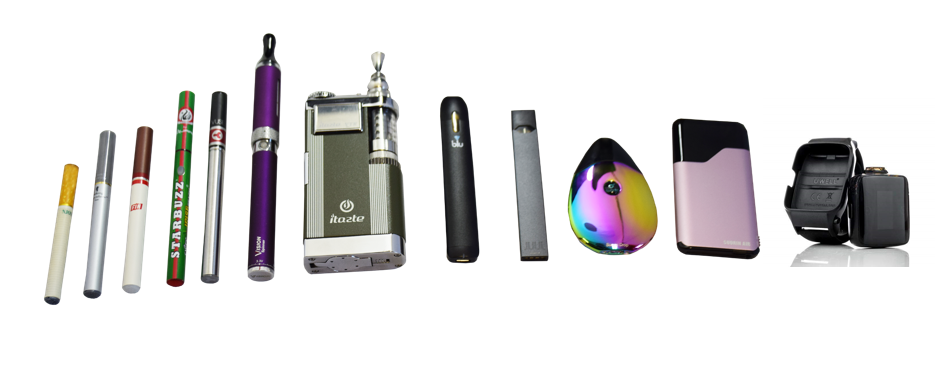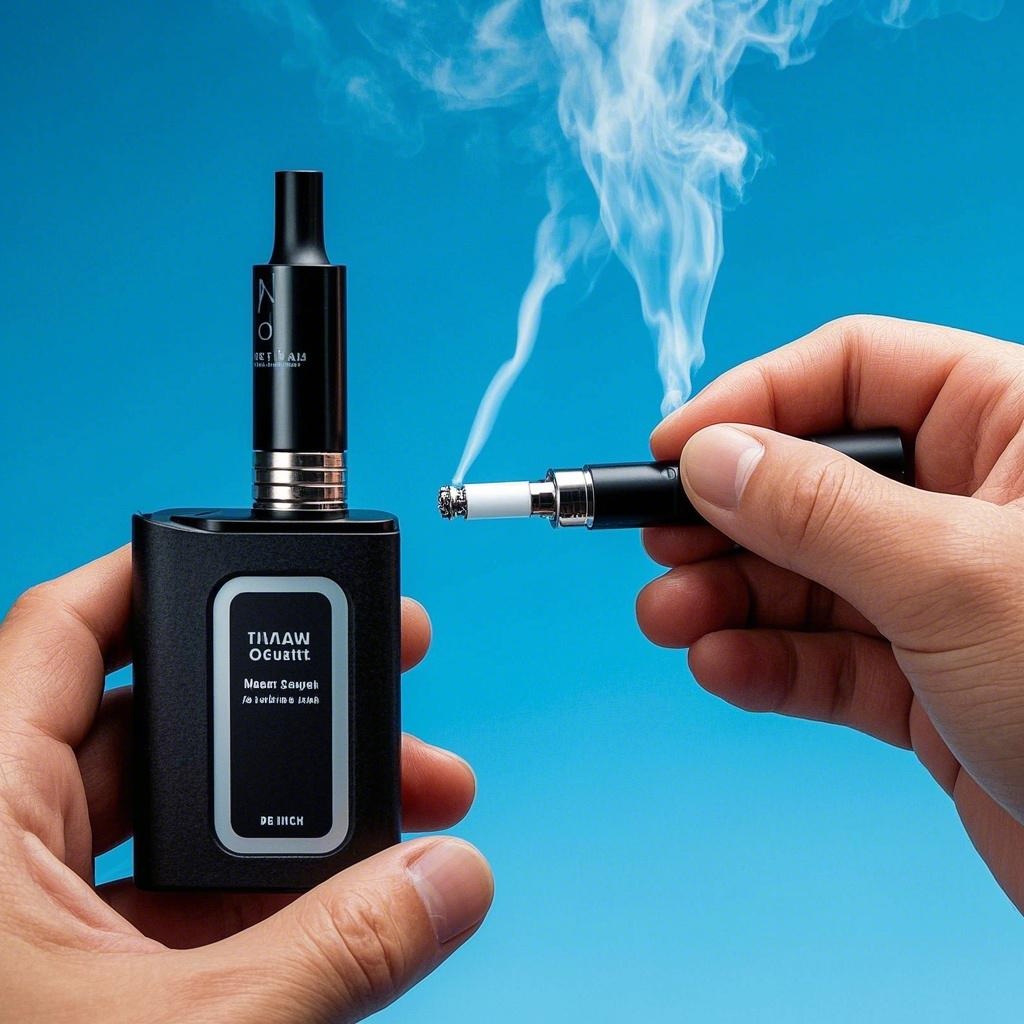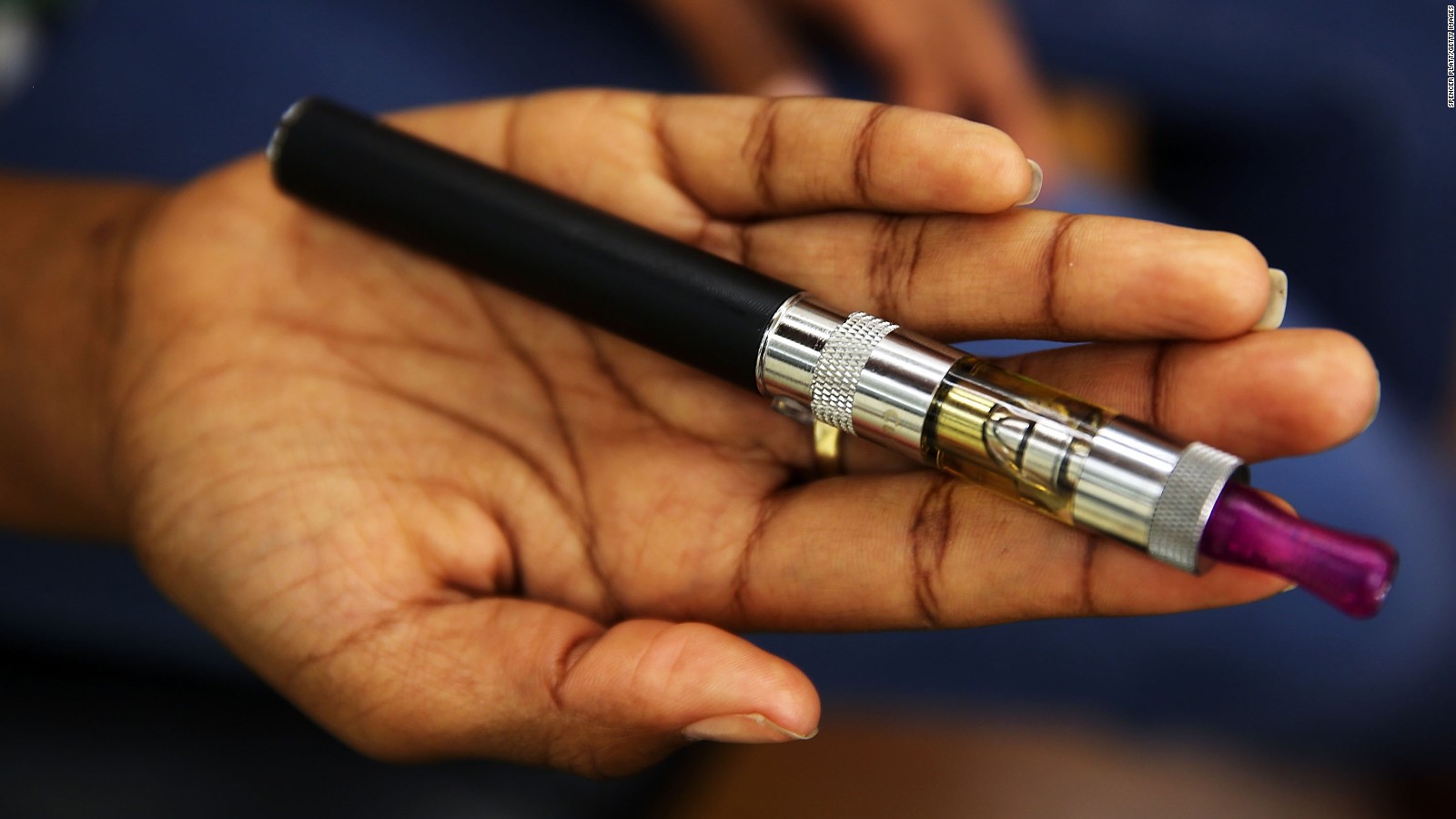The invention of e-cigarettes marked a significant turning point in the history of smoking, offering an alternative to traditional tobacco products. As concerns over the health risks of smoking grew, the need for a safer, less harmful option became increasingly apparent. E-cigarettes emerged as a revolutionary solution to this challenge, providing smokers with a way to enjoy the sensation of smoking without the harmful effects of combustible tobacco. But when exactly were e-cigarettes invented, and who was behind this groundbreaking innovation? In this article, we’ll explore the history of e-cigarettes, from their origin to their evolution into the modern-day products we know today, as well as the key individuals who contributed to their creation.
The Origin and Invention Background of E-Cigarettes
E-cigarettes’ Origin and Smoking Trends Before Invention
The origins of e-cigarettes can be traced back to the early 2000s, but their development was deeply influenced by the growing awareness of the health risks associated with smoking traditional tobacco products. Before e-cigarettes were invented, smoking was not only a popular habit but also an entrenched social practice. However, as public health campaigns and scientific studies increasingly linked smoking to severe diseases like lung cancer, heart disease, and respiratory illnesses, the demand for safer alternatives began to rise.
Additionally, the trend towards anti-smoking legislation was gaining momentum globally. Countries introduced bans on smoking in public spaces, and tobacco companies faced stricter regulations on advertising and sales. These societal shifts created the perfect environment for the development of an alternative product that could mimic the smoking experience without the harmful effects of tobacco combustion.
The Concept of E-Cigarettes as a Safer Alternative
E-cigarettes were conceived as a healthier alternative for smokers who wanted to quit or reduce their tobacco consumption. The idea was to provide the sensation and ritual of smoking while eliminating the harmful tar and carcinogens produced by burning tobacco. E-cigarettes use a battery-powered heating element to vaporize a liquid solution, known as e-liquid or vape juice, which typically contains nicotine, flavorings, and other chemicals. This vaporization process significantly reduces the harmful byproducts that are produced when tobacco is burned, making e-cigarettes a potentially less harmful option for smokers.
The aim was not only to offer a less dangerous alternative for current smokers but also to reduce the number of people who take up smoking in the first place. The convenience and less harmful nature of e-cigarettes attracted a wide audience, including people who had previously been deterred by the risks associated with smoking.
The Initial Motivation Behind E-Cigarette Development
The first concept of the e-cigarette emerged from a desire to create a smoking cessation tool. The initial motivation was largely driven by health concerns, particularly the toxic effects of smoking. The product’s development was spearheaded by individuals like Hon Lik, a Chinese pharmacist, who aimed to create a solution to the smoking-related health issues that plagued millions of people worldwide. Hon Lik’s vision was to provide smokers with a product that could help them quit smoking, or at the very least, reduce their tobacco consumption by offering a healthier, controlled alternative.
In the early stages of e-cigarette development, the technology was rudimentary, and the designs were far from perfect. However, with continued research and refinement, e-cigarettes began to evolve into the sleek, user-friendly devices that are popular today.
Summary Table: Development and Key Milestones
| Year | Milestone | Description |
|---|---|---|
| 1963 | First Patent for an E-Cigarette-like Device | Herbert A. Gilbert filed the first patent for a smokeless, non-tobacco cigarette-like device. |
| 2003 | Hon Lik Invents Modern E-Cigarette | Hon Lik, a Chinese pharmacist, develops the first practical e-cigarette. |
| 2004 | First E-Cigarettes Hit the Market | E-cigarettes were launched commercially, initially in China and soon after globally. |
| 2007 | E-Cigarettes Enter the Western Market | E-cigarettes began to gain popularity in Europe and the United States. |
Through this progression, e-cigarettes transitioned from a concept to a widely used product, ultimately changing the landscape of smoking and offering smokers a new option to manage their nicotine intake.
Key Inventors and Timeline of E-Cigarette Invention
The Inventor: Hon Lik and His Invention Story
The invention of the modern e-cigarette is largely credited to Hon Lik, a Chinese pharmacist, whose personal experience with smoking played a pivotal role in the creation of the device. Hon Lik was motivated by the desire to find a safer alternative to smoking after his father, a heavy smoker, passed away from lung cancer. His grief and frustration over the health risks of smoking led him to explore a way to deliver nicotine without the harmful effects of traditional smoking.
In 2003, Hon Lik developed the first practical e-cigarette prototype. His design involved a vaporization system, where nicotine solution (e-liquid) is vaporized using a heating element, instead of the combustion process found in traditional cigarettes. This was a groundbreaking innovation in the world of smoking cessation, as it allowed smokers to inhale nicotine without the toxic byproducts produced by burning tobacco.
Hon Lik’s invention was originally intended as a tool for smoking cessation, helping smokers quit by providing them with a safer alternative. This vision evolved over time, and e-cigarettes eventually became a popular lifestyle product used by smokers and non-smokers alike.
Timeline of E-Cigarette Invention
The timeline below highlights the significant milestones in the development of e-cigarettes, from the early patents to the commercial launch of modern devices:
| Year | Event | Description |
|---|---|---|
| 1963 | First Patent for a Smokeless Cigarette | The first patent for a smokeless, non-tobacco cigarette was filed by Herbert A. Gilbert, although it was not developed into a marketable product. |
| 2003 | Hon Lik’s First E-Cigarette Design | Hon Lik invents the first commercially viable e-cigarette, using a vaporization system that delivers nicotine without combustion. |
| 2004 | E-Cigarettes Enter the Market | Hon Lik’s e-cigarette enters the Chinese market, becoming the first widely available e-cigarette product. |
| 2006 | E-Cigarettes Gain International Attention | E-cigarettes are introduced to international markets, particularly in Europe and North America, marking the beginning of the global e-cigarette industry. |
| 2007 | E-Cigarette Patented and Commercialized Globally | Hon Lik’s design is patented and commercialized on a global scale, with e-cigarettes entering the mainstream market as a smoking alternative. |
Early E-Cigarette Designs vs. Modern Products
The early models of e-cigarettes were relatively simple in design. The first generation of e-cigarettes looked similar to traditional cigarettes, with a plastic casing that housed the nicotine solution, an atomizer to vaporize the liquid, and a battery to power the device. These early e-cigarettes were often bulky, had limited battery life, and produced only a small amount of vapor compared to modern devices.
| Feature | Early E-Cigarettes (2003-2007) | Modern E-Cigarettes (Today) |
|---|---|---|
| Design | Basic, cigarette-shaped devices | Sleek, compact devices with ergonomic designs |
| Vapor Production | Low vapor production | High vapor production with adjustable settings |
| Battery Life | Short battery life (1-2 hours of use) | Long battery life (up to several hours) |
| Nicotine Delivery | Limited control over nicotine intensity | Variable nicotine strength and flavor options |
| Device Type | Primarily disposable or refillable | Rechargeable devices with replaceable pods or tanks |
While early e-cigarettes were a significant improvement over traditional smoking, they lacked the sophistication and efficiency of today’s devices. Modern e-cigarettes are powered by advanced technologies such as variable voltage and temperature control, providing users with a customizable vaping experience. Additionally, modern e-cigarettes feature larger e-liquid reservoirs, longer-lasting batteries, and enhanced safety features, making them more convenient and enjoyable to use.
Technological Advancements and Innovations in E-Cigarettes
From Basic Design to High-Tech Products: Key Technological Breakthroughs
E-cigarettes have evolved significantly since their inception, undergoing numerous technological advancements that have transformed them from simple prototypes into high-tech devices. Early e-cigarette models were basic and rudimentary, offering limited functionality with a small vapor production. Over the years, a series of key technological breakthroughs have enhanced both the user experience and the overall performance of e-cigarettes. These developments include improvements in vapor production, battery efficiency, e-liquid formulation, and user customization options.
The first major breakthrough was the introduction of atomizers and vaporization technology, which enabled the nicotine solution to be vaporized rather than burned. This change reduced the harmful chemicals typically found in cigarette smoke, making e-cigarettes a safer alternative. Later, advancements in coil technology and temperature control systems allowed users to enjoy a more consistent and customized vaping experience.
Another crucial innovation was the development of advanced circuit boards that enable features like variable wattage, temperature control, and smart vaping. These features give users greater control over their vaping experience, allowing them to adjust the heat and vapor production to their personal preferences.
Innovations by Different Brands: Smoking Experience, Vapor Simulation, and Heating Systems
As the e-cigarette industry matured, various brands introduced their own innovations to differentiate their products in a crowded market. These innovations targeted key aspects of the smoking experience, such as vapor production, throat hit, flavor quality, and battery life.
- Vapor Production & Smoke Simulation:
One of the primary goals for e-cigarette manufacturers was to replicate the experience of smoking traditional tobacco products, particularly the sensation of inhaling smoke. Companies like Juul and SMOK developed devices with enhanced vapor production systems, including larger e-liquid reservoirs and more powerful atomizers, enabling users to generate thicker, denser clouds of vapor that closely mimic the experience of smoking. - Nicotine Delivery:
The introduction of nicotine salt e-liquids was another innovation that significantly improved the smoking experience. Nicotine salts, which are absorbed more efficiently by the body, provide a smoother throat hit and quicker nicotine delivery, similar to traditional smoking. Brands like Juul popularized this innovation, helping users achieve a more satisfying and faster nicotine intake. - Advanced Heating Systems:
Initially, e-cigarettes relied on basic heating elements to vaporize the e-liquid, but newer technologies, such as ceramic coils and mesh coils, have drastically improved the consistency of heat distribution. These advancements result in better flavor production, longer coil life, and more efficient heating.
Key Technological Progressions in the E-Cigarette Industry
| Technology Area | Early Technology (2003-2007) | Modern Technology (Today) |
|---|---|---|
| Vapor Production | Basic atomizer, low vapor output | High-power atomizers, dense vapor clouds |
| Heating Technology | Simple wire coil heating | Ceramic coils, mesh coils, adjustable temperature control |
| Nicotine Delivery | Traditional freebase nicotine | Nicotine salts for smoother throat hit and quicker absorption |
| Battery Technology | Small, short-lived batteries (often non-rechargeable) | High-capacity lithium-ion rechargeable batteries with long-lasting life |
| E-Liquid Formulation | Basic flavors, high PG (propylene glycol) content | Wide variety of flavors, balanced VG/PG ratios for smoother vaping |
| User Customization | Limited to basic on/off functionality | Variable wattage, temperature control, adjustable airflow |
Battery Technology and E-Liquid Formulation Evolution
Battery life and e-liquid formulation are two of the most crucial areas where e-cigarette technology has improved over time. In the early days, e-cigarettes were powered by small, disposable batteries that lasted only a few hours, leading to frequent recharges. Today, advanced lithium-ion batteries are used, providing long-lasting power for several hours of continuous vaping. These high-capacity batteries are often paired with charging docks or USB-C charging ports for faster and more convenient recharging.
E-liquid formulation has also evolved significantly. Early e-liquids were basic blends of propylene glycol (PG) and vegetable glycerin (VG), with limited flavor choices. Today, e-liquids are available in a wide range of flavors and formulations, with more balanced PG/VG ratios for smoother vapor production and better flavor profiles. Additionally, nicotine salts have become more popular, offering a smoother throat hit and quicker nicotine delivery, which has improved the vaping experience.
Conclusion
The evolution of e-cigarette technology has been remarkable, with numerous innovations that have improved both the performance and user experience. From enhanced vapor production to better battery life and more efficient nicotine delivery, e-cigarettes have come a long way since their invention. These technological advancements have made e-cigarettes a more viable alternative to traditional smoking, attracting a broader range of users and driving further innovation within the industry.
The Promotion and Market Response of E-Cigarettes
Global Promotion and Market Entry of E-Cigarettes
Since their invention in the early 2000s, e-cigarettes have undergone a remarkable global expansion. The first market to embrace e-cigarettes was China, where Hon Lik’s original design was initially launched in 2004. The success of this product in China laid the foundation for international expansion. Over the next few years, e-cigarettes gained significant traction in Europe and the United States, particularly among smokers seeking a healthier alternative.
The promotion of e-cigarettes has been largely driven by their positioning as a smoking cessation tool and a safer alternative to traditional tobacco products. Marketing strategies focused on these benefits, emphasizing the reduction of harmful toxins found in traditional cigarettes. E-cigarette brands began targeting smokers who were unable or unwilling to quit, promoting their products through online platforms, retail stores, and trade shows. As the market grew, manufacturers also started to capitalize on the increasing demand for flavored e-liquids, appealing to both existing smokers and non-smokers who were curious about vaping.
Market Response: Early Adoption and Regulatory Reactions
In the early years, e-cigarettes met with mixed responses. Many smokers were intrigued by the possibility of an alternative to traditional smoking, and initial studies suggested that e-cigarettes could be less harmful than combustible tobacco. However, the early adoption of e-cigarettes was also met with skepticism from both health professionals and governments.
Public health organizations and governments in many countries initially took a cautious stance. Some countries embraced the potential of e-cigarettes as a smoking cessation tool, while others raised concerns about their safety and long-term health effects. Early studies highlighted both the potential benefits of e-cigarettes in reducing smoking-related harms and the unknown risks of inhaling vaporized substances. Despite these concerns, e-cigarettes gained a solid following among smokers, particularly those looking to quit traditional cigarettes.
E-Cigarette Regulations and Sales in Different Countries
As e-cigarettes grew in popularity, governments worldwide introduced regulations to address concerns about their safety, usage, and appeal to younger demographics. Regulations vary significantly between countries, with some nations imposing strict laws and others taking a more relaxed approach.
- United States:
In the U.S., e-cigarettes were initially marketed as a smoking cessation tool. However, concerns about youth vaping led to increasing regulation by the FDA (Food and Drug Administration). The FDA now regulates e-cigarettes as tobacco products, requiring manufacturers to submit their products for approval before they can be sold. In addition, some states have imposed age restrictions on sales, while others have introduced flavor bans. - European Union:
The EU has also introduced strict regulations regarding e-cigarettes. Under the Tobacco Products Directive (TPD), e-cigarette sales are allowed, but with regulations on nicotine concentration, e-liquid packaging, and advertising. The EU has also established a minimum legal age for purchasing e-cigarettes, ensuring that they are not marketed to minors. - United Kingdom:
The UK has been more lenient in its approach to e-cigarettes. Public health bodies like Public Health England have endorsed e-cigarettes as a smoking cessation tool, and they are widely available in retail outlets. However, regulations regarding advertising and sales to minors are still enforced. - China:
As the birthplace of the modern e-cigarette, China is the largest producer and consumer of e-cigarettes. Although there have been recent moves toward tighter regulations on e-cigarette production and marketing, the country continues to lead the world in e-cigarette manufacturing and export.
| Country/Region | Regulations | Sales Situation |
|---|---|---|
| United States | FDA regulates as tobacco products, age restrictions, flavor bans in some states | Strong growth, particularly in states with less regulation |
| European Union | TPD regulations, nicotine concentration limits, age restrictions | High acceptance, particularly in the UK and Germany |
| United Kingdom | Endorsed as smoking cessation tool, available widely in retail | Strong market presence, supported by public health bodies |
| China | Growing regulatory oversight on production and marketing, no nationwide age limit yet | Largest producer and exporter, rapidly expanding domestic market |
Comparing E-Cigarettes to Traditional Cigarettes: Market Appeal
E-cigarettes have attracted attention in the market due to their perceived health benefits compared to traditional cigarettes. The appeal lies in the reduced exposure to harmful chemicals. Traditional cigarettes involve the combustion of tobacco, which releases thousands of harmful chemicals, many of which are carcinogenic. In contrast, e-cigarettes vaporize e-liquids, which contain fewer toxins.
From a market perspective, e-cigarettes have gained traction for several reasons:
- Health Conscious Consumers: As awareness of the health risks associated with smoking grew, many smokers sought alternatives, and e-cigarettes became a popular choice.
- Variety and Customization: E-cigarettes come in a wide range of flavors, nicotine strengths, and device types, allowing users to personalize their experience.
- Cost-Effectiveness: While the initial cost of an e-cigarette device may be higher, the ongoing cost of e-liquid refills is generally lower than the cost of purchasing cigarettes regularly.
Despite their rising popularity, e-cigarettes still face significant competition from traditional tobacco products. Some smokers prefer the ritual and social aspects of cigarette smoking, while others may be hesitant to switch due to concerns over the long-term effects of vaping.
Overall, e-cigarettes have demonstrated substantial market appeal and growth, particularly among those seeking to quit smoking or reduce tobacco-related health risks. However, as the industry faces increasing regulation and scrutiny, its future remains closely tied to both public health perceptions and government policies.
The Impact of E-Cigarette Invention on the Modern Tobacco Industry
The Disruption of the Traditional Tobacco Industry
The invention of e-cigarettes has had a profound impact on the traditional tobacco industry, challenging long-standing norms and fundamentally shifting the landscape of smoking products. Traditional cigarettes, once the dominant form of nicotine consumption, have seen a noticeable decline in demand in many regions, particularly in Western countries. This decline can be attributed to several factors, with the rise of e-cigarettes being one of the most significant.
E-cigarettes offer a healthier alternative to smoking by reducing exposure to harmful chemicals found in tobacco smoke, such as tar and carbon monoxide. As a result, many smokers who were previously reluctant or unable to quit have turned to vaping as a less harmful option. For public health officials, e-cigarettes have sparked a shift in how smoking cessation is approached, offering a new avenue for helping smokers reduce or eliminate their tobacco consumption.
For the tobacco industry, e-cigarettes represent both an opportunity and a threat. As smoking rates decline, tobacco companies have faced increasing pressure to adapt to the changing market. Some have responded by diversifying their portfolios to include e-cigarettes and other vaping products, while others have focused on promoting heated tobacco products or nicotine pouches as alternatives. This shift highlights the growing recognition that the future of the tobacco industry may no longer rely solely on traditional cigarettes.
The Rise of E-Cigarettes and Its Impact on Tobacco Companies’ Strategies
As e-cigarettes gained popularity, large tobacco companies saw a potential threat to their traditional revenue streams, which have long relied on the sale of cigarettes. In response, many of the world’s largest tobacco companies, such as Philip Morris International, British American Tobacco (BAT), and Imperial Brands, have made significant investments in the e-cigarette and vaping sector.
These companies have launched their own e-cigarette brands to capture market share in the rapidly growing segment. For instance, Philip Morris introduced IQOS, a heated tobacco product, while BAT launched its Vuse range of e-cigarettes. Rather than resisting the change, many tobacco giants have embraced the shift toward smoking alternatives, seeing it as a way to secure their future in an increasingly health-conscious world.
Additionally, the rise of e-cigarettes has led to significant changes in global tobacco companies’ strategies. These companies are now focused on diversification and innovation. While cigarettes remain a core part of their business, they are increasingly investing in the development of new, potentially less harmful products. E-cigarettes, as well as nicotine salts, heated tobacco devices, and smokeless tobacco products, have allowed them to expand their portfolios and tap into new markets.
The growth of e-cigarettes also affected market share distribution, with established tobacco companies gaining a foothold in the vaping market but facing stiff competition from independent vaping brands and start-ups. These newer companies, such as Juul and SMOK, have become formidable competitors, capturing a large portion of the market, especially in the early years of vaping’s rise.
| Tobacco Company | E-Cigarette Brand/Initiative | Strategy Focus |
|---|---|---|
| Philip Morris | IQOS (Heated Tobacco Product), VEEV (E-Cigarettes) | Transitioning from cigarettes to smoke-free alternatives |
| British American Tobacco | Vuse (E-Cigarettes), glo (Heated Tobacco) | Expanding product range to include alternative nicotine products |
| Imperial Brands | Blu (E-Cigarettes) | Diversifying into vaping and nicotine pouches |
| Altria (formerly Marlboro) | JUUL (Acquisition in 2018) | Invested heavily in e-cigarettes to cater to younger smokers |
E-Cigarettes as a Public Health Challenge and a Healthier Alternative
While e-cigarettes have been touted as a healthier alternative to traditional smoking, their widespread use has introduced new challenges for public health policies. Governments, health organizations, and the medical community have struggled to determine how to regulate e-cigarettes in a way that balances their potential benefits with the risks they may pose to non-smokers, particularly adolescents.
One of the primary concerns is the increasing popularity of e-cigarettes among young people. In many countries, e-cigarettes have become a gateway for non-smokers, including teenagers, to experiment with nicotine. Public health officials have raised concerns about the long-term effects of nicotine addiction and the potential for e-cigarettes to serve as a gateway to traditional cigarette smoking.
On the other hand, e-cigarettes are seen as a safer alternative to smoking, offering smokers a means to reduce their risk of smoking-related diseases. Public health bodies like Public Health England have supported the use of e-cigarettes as part of smoking cessation programs, highlighting the reduced harm compared to traditional cigarettes. The Royal College of Physicians and other medical bodies have also endorsed vaping as a less harmful alternative for smokers who cannot quit through other means.
The growing adoption of e-cigarettes has also prompted public health authorities to revise their policies and guidelines. Many countries have implemented age restrictions, marketing regulations, and restrictions on where e-cigarettes can be used. For example, several nations have banned the sale of e-cigarettes to minors, while others have imposed taxes on vaping products or flavor bans to limit the appeal to young people.
| Country/Region | Public Health Approach to E-Cigarettes | Key Regulations |
|---|---|---|
| United Kingdom | E-cigarettes as a smoking cessation tool | Endorsement by Public Health England, promotion for quitting |
| United States | Concern over youth vaping, regulation by FDA | Age restrictions, flavor bans, marketing regulations |
| Australia | Strict ban on e-cigarettes without prescription | E-cigarettes only available with prescription |
| European Union | Regulated as tobacco products under TPD | Age restrictions, nicotine limits, packaging requirements |
Conclusion
The advent of e-cigarettes has reshaped the modern tobacco industry in profound ways. Not only has it provided a safer alternative for smokers, but it has also forced traditional tobacco companies to adapt their strategies and embrace innovation. However, the rise of e-cigarettes presents new challenges for public health policies, particularly concerning youth usage and long-term health effects. As e-cigarettes continue to evolve, their impact on both the tobacco industry and public health will likely remain a central issue for governments and health organizations worldwide.






